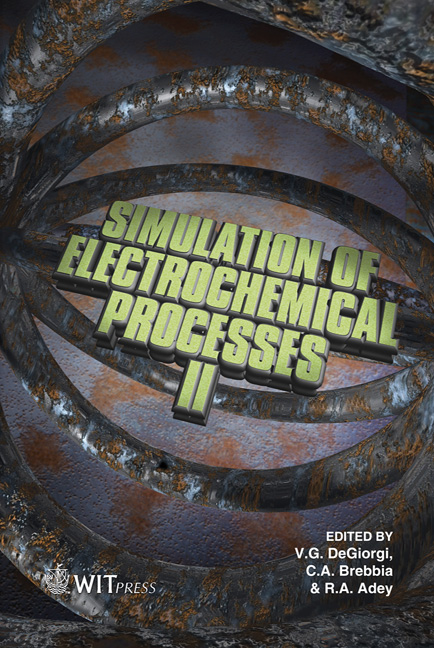Micro-scale Computer Modelling Of The Relationship Between Metallurgical Microstructure And Localized Corrosion Effects
Price
Free (open access)
Transaction
Volume
54
Pages
10
Published
2007
Size
654 kb
Paper DOI
10.2495/ECOR070011
Copyright
WIT Press
Author(s)
S. G. R. Brown & N. C. Barnard
Abstract
An attempt is made to model the corrosion effects experienced by zinc and zinc–aluminium coating alloys in contact with conductive, chloride containing aqueous electrolytes. 3D predictions of localized corrosion of zinc alloy coatings are made using a control-volume finite difference approach, where an irregular structured mesh is employed. The model deals with the movement of multiple evolving conserved concentration fields. Perturbations in concentration are used to determine the conditions at an exposed surface, in addition to influencing any processes operating. The effect of coupled-materials and electrolyte present on the progression of localized corrosion processes is calculated using established relationships and experimentally derived data. Quantitative predictions of the corrosion performance at the exposed surface and cut-edge to electrolyte (used in the accelerated corrosion testing of these coating alloys) are made. Comparison is made to the predicted form of the current density fields around corroding surfaces and those observed experimentally. In addition, absolute metal losses calculated across exposed areas of the simulated alloys are compared with those estimated during experimental investigations. Keywords: zinc alloy coatings, localized dissolution, finite difference method. 1 Introduction As the cost of corrosion processes accounts for ca 5% GDP of the developed nations, it is no wonder that a great deal of interest exists in protecting the world’s infrastructure and durable goods. The use of steel in many applications
Keywords
zinc alloy coatings, localized dissolution, finite difference method.





